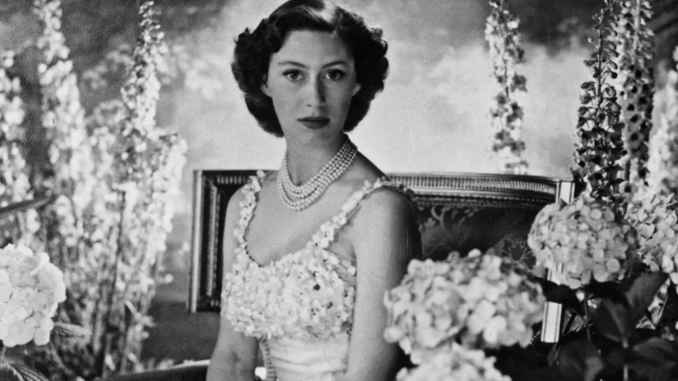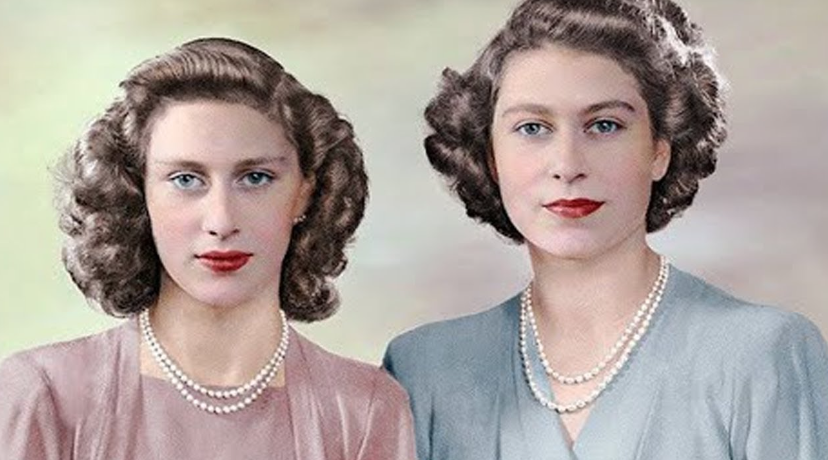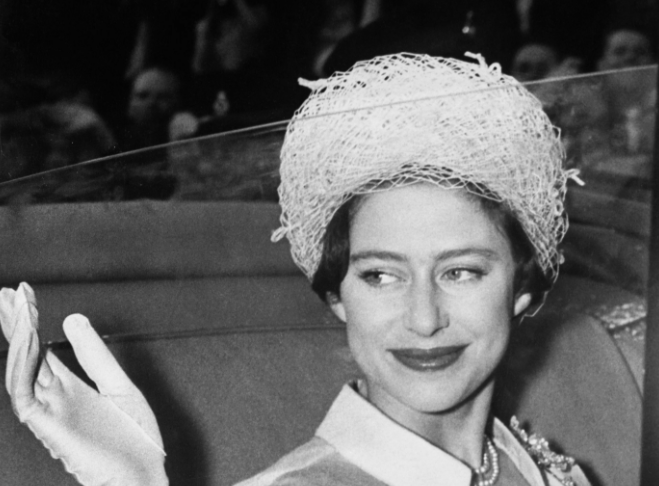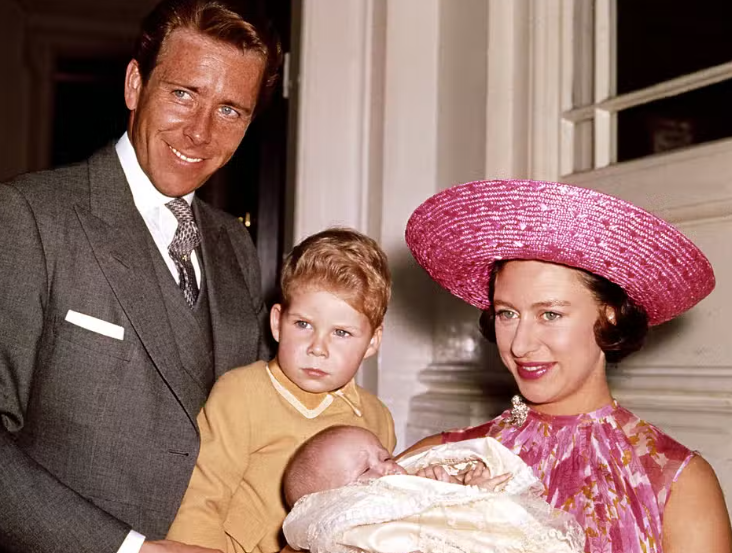
Princess Margaret, Countess of Snowdon was the younger daughter of King George VI and Queen Elizabeth and the only sibling of Queen Elizabeth II. Born as Her Royal Highness Princess Margaret of York in her maternal grandfather’s home in Scotland, she became Her Royal Highness The Princess Margaret when her father succeeded the throne after the abdication of his brother, King Edward VIII. Educated at home under her mother and Scottish governess, she performed her first official duty at the age of seventeen, when she launched the ocean liner “Edinburg Castle”. From the 1950s onwards, Margaret became one of the world’s most celebrated socialites, famed for her glamorous lifestyle and reputed romances. She was a controversial member of the British royal family. Her divorce received much negative publicity, and her private life was for many years the subject of intense speculation by media and royal watchers. She began to involve herself with charities, eventually serving more than fifty such organizations as patron or president. She died in London in 2002, after suffering a fourth and final stroke at the age of 71.
What is Princess Margaret Known For?
- Princess Margaret was the younger daughter of King George VI and Queen Elizabeth.
- Known for her glamour and beauty, displayed an early love for nightlife and the arts.
Princess Margaret’s Death Cause
Princess Margaret suffered from ill health. For the last twenty years of her life, she was unwell. She was a heavy smoker. In the 1970s, she suffered a nervous breakdown and was treated for depression by Mark Collins, a psychiatrist from the Priory Clinic. Later on, she suffered from migraines, laryngitis, and bronchitis. In 1985, she underwent a lung operation, and in 1993 had bad pneumonia. In 1991, she gave up smoking, though she continued to drink heavily. Between 1998 and 2001, she suffered three strokes. She was hospitalized on 10 January 2001, due to loss of appetite and swallowing problems after a further stroke. last public appearances were at the 101st birthday celebrations of her mother in August 2001, and the 100th birthday celebration of her aunt, Princess Alice, Duchess of Gloucester, that December. Princess Margaret died in the King Edward VII’s Hospital, London, at 06:30 (GMT) on 9 February 2002, at the age of 71, one day after having suffered another stroke that was followed by cardiac problems and three days after the 50th anniversary of her father’s death.
Charles, then Prince of Wales, paid tribute to his aunt in a television broadcast. Following her death, private memorial services were held at St Mary Magdalene Church and Glamis Castle. Margaret’s coffin, draped in her personal standard, was taken from Kensington Palace to St James’s Palace before her funeral. The funeral was held on 15 February 2002, the 50th anniversary of her father’s funeral. Her ashes were placed in the Royal Vault in St George’s Chapel before being transferred to the tomb of her parents, King George VI and Queen Elizabeth The Queen Mother (who died seven weeks after Margaret), in the King George VI Memorial Chapel two months later. A state memorial service was held at Westminster Abbey on 19 April 2002. Another memorial service to mark the 10th anniversary of Margaret and the Queen Mother’s death was held on 30 March 2012 at St George’s Chapel, Windsor Castle, which was attended by the Queen and other members of the royal family.
Who are Princess Margaret’s Parents?
Princess Margaret was born on 21st August 1930 in Glamis Castle in Angus in Scotland. She was delivered by Sir Henry Simson, the royal obstetrician. The Home Secretary, J. R. Clynes, was present to verify the birth. The registration of her birth was delayed for several days to avoid her being numbered 13 in the parish register. Her parents were King George VI and Queen Elizabeth or Elizabeth Bowes-Lyon. Her dad was the Duke of York (later King George VI), the second son of King George V and Queen Mary. Her mum was the Duchess of York (later Queen Elizabeth The Queen Mother), the youngest daughter of the 14th Earl and the Countess of Strathmore and Kinghorne. She was the first member of the royal family in direct line of succession to be born in Scotland in the 1600s. She had an elder sister in Queen Elizabeth II. Her full name was Margaret Rose. She holds Scottish nationality and she belongs to the Scottish-White ethnicity. Her childhood was spent with her parents and sister in the castle. She was baptized in the private chapel of Buckingham Palace on 30 October 1930 by Cosmo Lang, the Archbishop of Canterbury.
At the time of her birth, Margaret was fourth in the line of succession to the British throne. Margaret was educated alongside her sister, Elizabeth, by their Scottish governess, Marion Crawford. Her education was mainly supervised by her mother, who in the words of Randolph Churchill “never aimed at bringing her daughters up to be more than nicely behaved young ladies”. When Queen Mary insisted on the importance of education, the Duchess of York commented, “I don’t know what she meant. After all I and my sisters only had governesses and we all married well — one of us very well”. Her grandfather, George V, died when she was five, and her uncle acceded as King Edward VIII. In 1936, when Margaret was only 6, her paternal uncle King Edward VIII had to leave the throne since he expressed his desire to marry a divorcee Wallis Simpson. King Edward VIII fulfilled his desire and relinquished the throne for his love. Hence, Margaret’s father George VI became the next King. Her sister was heir presumptive and Princess Margaret was second in line to the throne.

Princess Margaret’s Career Work
- Princess Margaret was a teenager during World War II. The two sisters were told to leave England and go to Canada. But their parents refused to send them to a safer zone while the country was facing the gravest crisis.
- Elizabeth and Margaret spent the first few months of the Second World War at Birkhall in Scotland, returning to Sandringham House near Sandringham, Norfolk to spend Christmas. Thereafter, they moved to Windsor Castle, a royal residence close to London, where they spent the rest of the war years.
- During the war, they spent most of their time away from their parents.
- As the Second World War ended on 8th May 1945, she appeared with her family on the balcony of Buckingham Palace.
- Two princesses then disappeared into the crowd, secretly enjoying the victory celebration.
- On 15th April 1946, she was confirmed into the Church of England.
- After then, she began to appear in public more frequently and soon became famous as a glamorous young beauty.
- On 1st February 1947, she alongside Princess Elizabeth accompanied their parents on a month-long state tour of Southern Africa.
- During this trip, she was chaperoned by her father’s equerry Peter Townsend, who would play a big role in her life for the next five years.
- Among Margaret’s first official engagements was launching the ocean liner, Edinburgh Castle, in Belfast in 1947.
- A celebrated beauty known for her glamour and fashion sense, Margaret was often featured in the press at balls, parties, and nightclubs with friends who became known as the “Margaret Set”. The number of her official engagements increased (they included a tour of Italy, Switzerland, and France), and she joined a growing number of charitable organizations as president or patron.
- In September 1951, one month after she had celebrated her twenty-first birthday, her father, King George VI, underwent surgery for lung cancer. During this period, she was appointed one of the Counsellors of State and was entrusted with carrying out her father’s official duties while he was incapacitated.
- Her father died five months later, on 6 February 1952, and her sister became Queen.
- After the coronation of her elder sister as Queen Elizabeth II, Princess Margaret, and her mother, ‘Queen Elizabeth, The Queen Mother’, moved to Clarence House while Queen Elizabeth II moved to Buckingham Palace.

- In 1953, Princess Margaret and Queen Mother went on an official tour to Rhodesia.
- Her first solo official tour took place in 1955 when she visited the British colonies in the Caribbean on behalf of Queen Elizabeth II.
- In 1962, she represented the British Crown at the independence ceremonies in Jamaica.
- Later, she had an official visit to the United States of America in 1963 and to Denmark in 1964, and Japan in 1969.
- In 1974, Princess Margaret once again traveled to the New World, visiting both United States and Canada.
- After a year, she visited Australia.
- In 1979, she visited Japan for the second time.
- She went on a fundraising tour to the United States of America on behalf of the Royal Opera House in October 1979.
- It was followed by her visit to the Philippines in 1980, Swaziland in 1981, and China in 1987.
Charity Work
She is very active in charity work. Her main interests were welfare charities, music, and ballet. She was president of the National Society for the Prevention of Cruelty to Children (NSPCC) and of the Royal Scottish Society for the Prevention of Cruelty to Children (Children 1st) and Invalid Children’s Aid Nationwide (also called ‘I CAN’). She was Grand President of the St John Ambulance Brigade and Colonel-in-Chief of Queen Alexandra’s Royal Army Nursing Corps. She was also the president or patron of numerous organizations, such as the West Indies Olympic Association, the Girl Guides, Northern Ballet Theatre, Birmingham Royal Ballet, Scottish Ballet, Tenovus Cancer Care, the Royal College of Nursing, and the London Lighthouse (an AIDS charity that has since merged with the Terrence Higgins Trust). In her capacity as president of the Royal Ballet, she played a key role in launching a fund for Dame Margot Fonteyn, who was experiencing financial troubles. With the help of the Children’s Royal Variety Performance, she also organized yearly fundraisers for NSPCC.
Princess Margaret Titles, Honors
- 21 August 1930 – 11 December 1936: Her Royal Highness Princess Margaret Rose of York
- 11 December 1936 – 6 October 1961: Her Royal Highness The Princess Margaret
- 6 October 1961 – 9 February 2002: Her Royal Highness Princess Margaret, Countess of Snowdon
- Companion of the Order of the Crown of India, CI 12 June 1947
- Dame of Justice of the Order of St John of Jerusalem, DJStJ 23 June 1948
- Dame Grand Cross of the Royal Victorian Order, GCVO 1 June 1953
- Dame Grand Cross of the Order of St John of Jerusalem, GCStJ 20 June 1956
- Royal Victorian Chain, 21 August 1990
- Royal Family Order of King George V
- Royal Family Order of King George VI
- Royal Family Order of Queen Elizabeth II
- Netherlands: Grand Cross of the Order of the Netherlands Lion, 1948
- Zanzibar: Order of the Brilliant Star of Zanzibar, First Class, 1956
- Belgium: Grand Cross of the Order of the Crown, 1960
- Uganda: Order of the Crown, Lion, and Spear of the Toro Kingdom, 1965
- Japan: Order of the Precious Crown, First Class, 1971
- Australia: Colonel-in-Chief of the Women’s Royal Australian Army Corps
- Bermuda: Colonel-in-Chief of the Bermuda Regiment
- Canada: Colonel-in-Chief of the Royal Highland Fusiliers of Canada
- Canada: Colonel-in-Chief of the Princess Louise Fusiliers
- Canada: Colonel-in-Chief of the Royal Newfoundland Regiment
- New Zealand: Colonel-in-Chief of the Northland Regiment
- United Kingdom: Colonel-in-Chief of the 15th/19th The King’s Royal Hussars
- United Kingdom: Colonel-in-Chief of the Light Dragoons
- United Kingdom: Colonel-in-Chief of the Royal Highland Fusiliers (Princess Margaret’s Own Glasgow and Ayrshire Regiment)
- United Kingdom: Colonel-in-Chief of the Queen Alexandra’s Royal Army Nursing Corps
- United Kingdom: Deputy Colonel-in-Chief of the Royal Anglian Regiment
- United Kingdom: Honorary Air Commodore, Royal Air Force Coningsby
How Rich was Princess Margaret?
Princess Margaret was a member of the royal family. Princess Margaret began amassing her fortune in 1943 when she was just 13 years old. Dame Margaret Greville left her £20,000. She also received massive inheritances when Queen Mary died, and when her father, King George VI passed away. At the time of her death, she had around £10 million in art and furniture, £5 million in investments, £2 million in jewelry, and £3 million in wedding gifts. Princess Margaret’s total net worth at the time of her death was £20 million. When Princess Margaret passed away, she left her entire fortune to her two children, Lord Linley and Lady Sarah. As Daily Mail explained, “A spokesman for Lord Linley confirmed yesterday that the princess’s estate was worth £7,700,176, on which inheritance tax was payable at 40 percent. Cash and property left after tax would amount to about £4.5 million.” After their mother’s death, the siblings auctioned off 800 of her personal items for around £5 million. Lord Linley also sold the seven-bedroom Caribbean house his mother gave him in 1999 for a reported £1.5 million. Before her demise, she was living a lavish lifestyle.
Princess Margaret’s Marriage and Wedding
Princess Margaret and her first love Peter Townsend
When the second world war ended, Margaret became close to and fell in love with Group Captain Peter Townsend. Peter was married at that time. From spring 1951 came several testimonies of a growing romantic attraction. A footman told how the King diverted the pair’s picnic plans, adding that whatever the King and Queen knew about the developing relationship, few royal staff failed to notice as it was obvious to them. Townsend said that his love for her began in Balmoral in 1951, and recalled an incident there in August when the princess woke him from a nap after a picnic lunch while the King watched, to suggest the King knew. Townsend and his wife, Rosemary Pawle separated in 1951, which was noticed by the press by July. With Rosemary, he had two sons: Giles and Hugo. After the divorce was finalized in December 1952, however, rumors spread about him and Margaret; the divorce, and shared grief over the death of the king in February 1952, likely helped them come together within the privacy of Clarence House, where the princess had her own apartment. Private Secretary to the Queen Sir Alan Lascelles wrote that Townsend came to tell him he had asked Margaret to marry him shortly before Christmas 1952. Other sources claim it occurred in April 1953. He was 15 years her senior. Margaret accepted and informed her sister, the Queen, whose consent was required by the Royal Marriages Act 1772. The constitutional crisis that the proposed marriage caused was public. His Cabinet refused to approve the marriage, and Geoffrey Fisher, Archbishop of Canterbury, did not approve of Margaret marrying a divorced man; opponents said that the marriage would threaten the monarchy as Edward VIII’s had. The Church of England Newspaper said that Margaret “is a dutiful churchwoman who knows what strong views leaders of the church hold in this matter”, but the Sunday Express—which had supported Edward and Wallis—asked, “IF THEY WANT TO MARRY, WHY SHOULDN’T THEY?”. The Queen then told the couple to wait until 1955, when Margaret would be 25. Churchill arranged for Townsend’s assignment as air attaché at the British Embassy in Brussels; he was sent on 15 July 1953, before Margaret’s return from Rhodesia on 30 July.
End of Relationship with Peter Townsend
On 31 October 1955, Margaret issued a statement: I would like it to be known that I have decided not to marry Group Captain Peter Townsend. I have been aware that, subject to my renouncing my rights of succession, it might have been possible for me to contract a civil marriage. But mindful of the Church’s teachings that Christian marriage is indissoluble and conscious of my duty to the Commonwealth, I have resolved to put these considerations before others. I have reached this decision entirely alone, and in doing so I have been strengthened by the unfailing support and devotion of Group Captain Townsend. “Thoroughly drained, thoroughly demoralized”, Margaret later said, she and Townsend wrote the statement together. She refused when Oliver Dawnay, the Queen Mother’s private secretary, asked to remove the word “devotion”. The written statement, signed “Margaret”, was the first official confirmation of the relationship. Townsend recalled that “We had reached the end of the road, our feelings for one another were unchanged, but they had incurred for us a burden so great that we decided together to lay it down”. The Associated Press said that Margaret’s statement was almost “a rededication of her life to the duties of royalty, making unlikely any marriage for her in the near future”; the princess may have expected to never marry after the long relationship ended because most of her eligible male friends were no longer bachelors.
Marriage to Antony Armstrong-Jones
Margaret met the photographer Antony Armstrong-Jones at a supper party in 1958. They became engaged in October 1959. Armstrong-Jones proposed to Margaret with a ruby engagement ring surrounded by diamonds in the shape of a rosebud. She reportedly accepted his proposal a day after learning from Townsend that he intended to marry a young Belgian woman, Marie-Luce Jamagne, who was half his age and greatly resembled Margaret. Her announcement of her engagement, on 26 February 1960, surprised the press, as she had concealed the romance from reporters. Margaret married Armstrong-Jones at Westminster Abbey on 6 May 1960. The ceremony was the first royal wedding to be broadcast on television, and it attracted viewing figures of 300 million worldwide. 2,000 guests were invited to the wedding ceremony. Margaret’s wedding dress was designed by Norman Hartnell and worn with the Poltimore tiara. She had eight young bridesmaids, led by her niece, Princess Anne. The honeymoon was a six-week Caribbean cruise aboard the royal yacht Britannia. The couple had two children (both born by Caesarean section at Margaret’s request): David, born 3 November 1961, and Sarah, born 1 May 1964.

Separation and Divorce with Antony Armstrong-Jones
Reportedly, Margaret had her first extramarital affair in 1966, with her daughter’s godfather Anthony Barton, a Bordeaux wine producer. She had a one-month liaison with Robin Douglas-Home, a nephew of former British Prime Minister Alec Douglas-Home. She claimed that her relationship with Douglas-Home was platonic, but her letters to him (which were later sold) were intimate. Claims that she was romantically involved with musician Mick Jagger, actor Peter Sellers, and Australian cricketer Keith Miller are unproven. In September 1973, Colin Tennant introduced Margaret to Roddy Llewellyn. Llewellyn was 17 years her junior. On 24 May 1978, the ‘decree nisi’ for Margaret and Anthony’s divorce was granted which gave her a lot of negative publicity.
How tall was Princess Margaret?
Princess Margaret was a beautiful woman who stood at the height of 5 ft 5 in / 165 cm and her bodyweight consisted of 128 lb / 58 kg. Her hair color was brown and she had a pair of blue eyes.
Leave a Reply